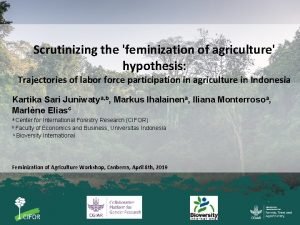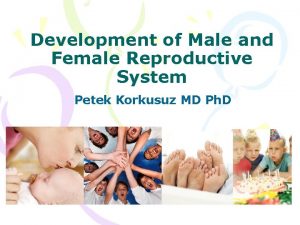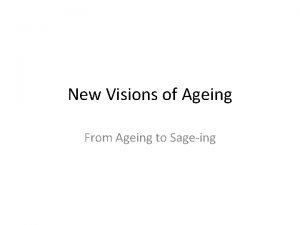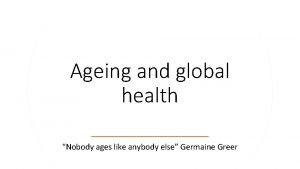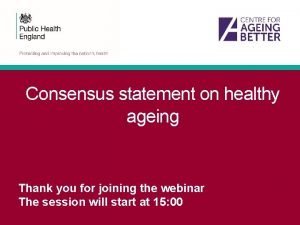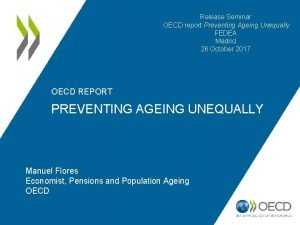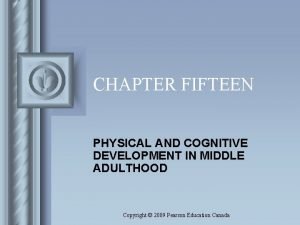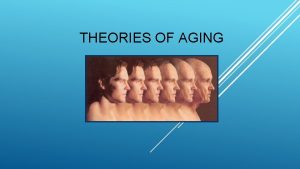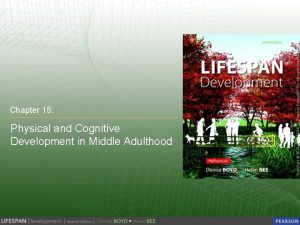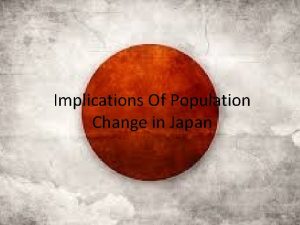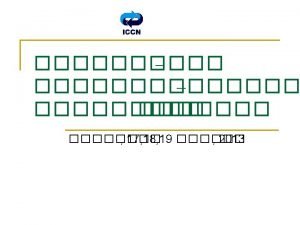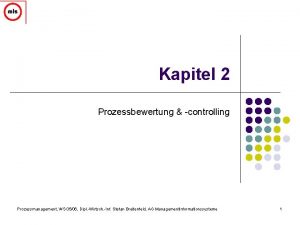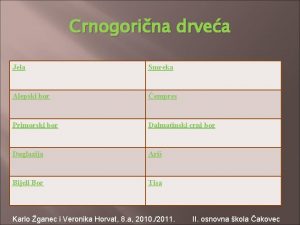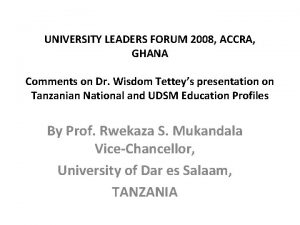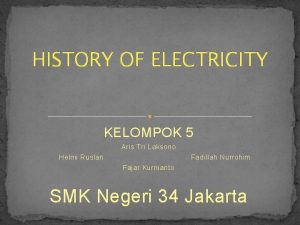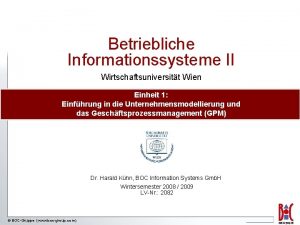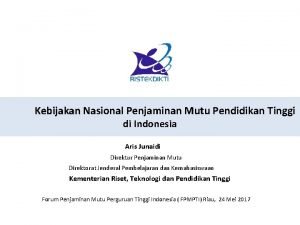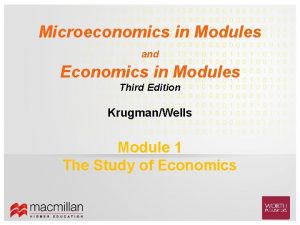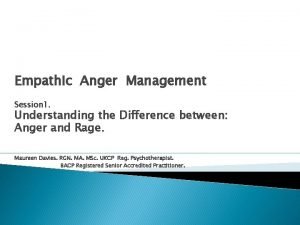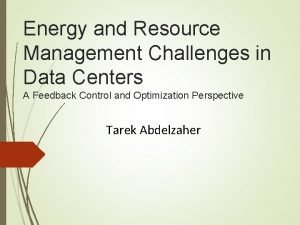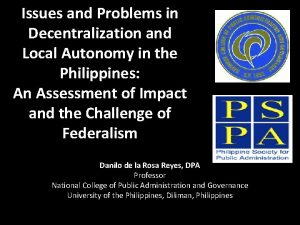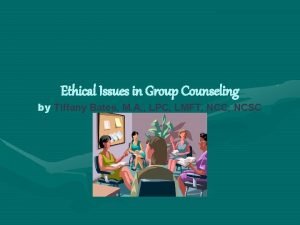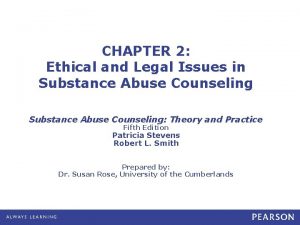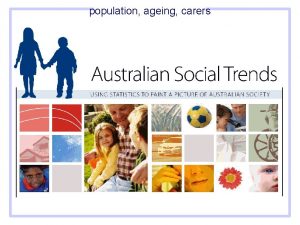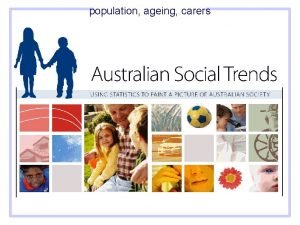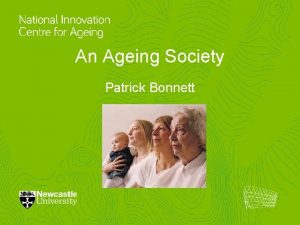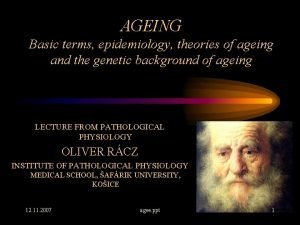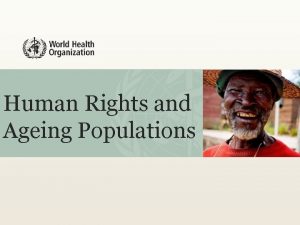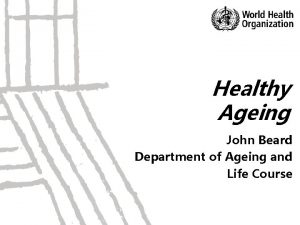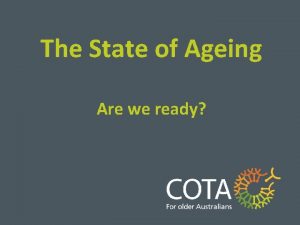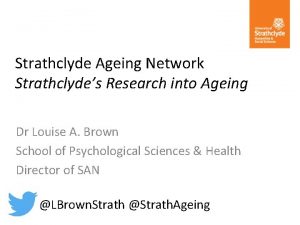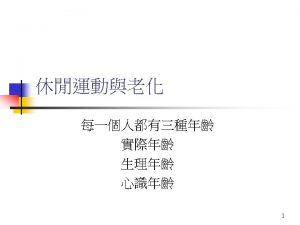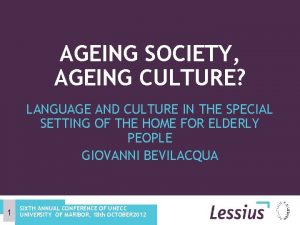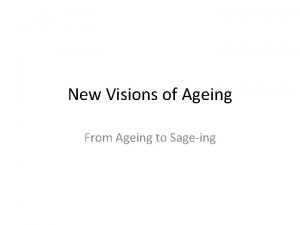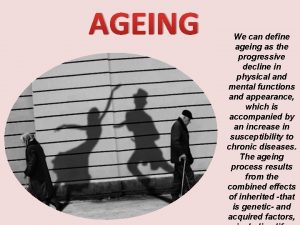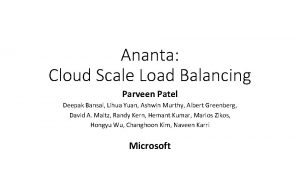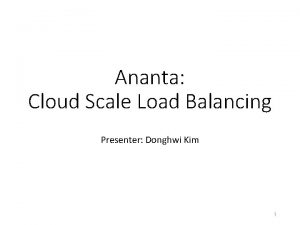Feminization of Ageing Poulation Economic Issues Aris Ananta






























































- Slides: 62

Feminization of Ageing Poulation: Economic Issues Aris Ananta Evi Nurvidya Arifin Institute of Southeast Asian Studies, Singapore A lecture at the “ 11 th ASEAN Gerontology Course”, jointly organized by INIA-SAGE ASEAN Centre on Aging (ISACA), the International Institute on Ageing, United Nations – Malta (INIA), and the Singapore Action Groups of Elders (SAGE). Singapore: 26 July 2010 – 3 August 2010

Outline Globalization and trend of feminization of older persons Feminization of Out-Migration and resumption of parenting Financial support for the older persons by gender Non-Financial support for the older persons by gender Will feminization of an ageing population raise the cost of taking care of sick older persons? Health status Physical Independence Education Economic opportunity Concluding remarks

A GLOBAL PHENOMENON

WOMEN ARE RISING EVERYWHERE IN EVERYTHING

Older Persons Are also Feminized More women survive into late life compared to men. n More than two-thirds of the world’s oldest (85+) population are women n Living longer means living longer in declining health and disability n The risk of chronic disease such as joint pain, high blood pressure, diabetes, and heart diseases also rises with age n

Trend in Feminization Source: Mujahid (2006) Women constitute a majority of older persons. In 2000 -2050, the proportion of women in the older population will keep increasing in the LDCs and SE Asia.

Trend in Feminization The higher proportion of women among the older population is a result of the higher survival rate among females and their higher life expectancy at age 60. Source: Mujahid (2006)

Feminization of Ageing in SEA countries, 2000 % of females in older population Source: Mujahid (2006) Except Cambodia, older women aged 60 and above in each of SEA countries accounted for about 53 -54%. A higher percentage is seen among those aged 80 and above.

Future Sex Ratio of Older Persons in SEA more women than men among older persons will remain in the next several decades Brunei Darussalam is an exception SEX RATIO

Out-migration and Resumption of Parenting

Parenting, not Grand-parenting The feminization of out-migration has resulted in the fact that more older persons resume the role of parenting Rather than grand-parenting, they are “parenting” their grand-children They are not simply baby-sitting and temporarily taking care of their grandchildren They are with the grand-children the whole time, replacing the role of their children. They also manage the financial needs of the grand-children.

Cost and Benefit of the Resumption As the older persons become older, they are not as healthy as when they parented their own children This can cause greater burden for the older persons On the other hand, the resumption of parenting may have also increased the emotional bond between grand-children (younger generation) and grand-parents (older generation) The strong emotional bond may result in

Parenting in Philippines This role is not seen as a burden Resumption of parenting is never considered an added burden It is an obligation and responsibility.

Feminization of out-migration has raised the economic value of older persons The value is higher the healthier the older persons are. The female older persons may be more valuable than the male older persons

Financial and Non-Financial Support for Older Persons by Gender

Financial Support: Thailand, 2007 Sources of Income Male Female Work 51 27. 2 Pension 8. 5 2. 9 Allowances 23. 1 25. 5 Interest/saving/rent 33. 8 30. 1 Spouse 24. 8 22. 1 Children 79. 5 85. 3 Relatives 9. 5 12. 3 Other 1. 3 1. 7 Source: Knodel and Chayovan, 2008

Financial Support: Indonesia, 2005 Female Male Female Older Persons are more likely to depend on other persons such as their children and spouses.

Some Non-Financial Support

Who are single? Single is defined as never married, divorced and widowed

Globally, older women are more likely than men to be single… It indicates the greater vulnerability of older women than older men. Source: Mujahid (2006) Women live longer than men, husband is usually older, and a widower has higher remarriage rates than a widow

Single Older Persons across SEA, 2000 A woman is less likely than a man to have a spouse to care for her in old age, and is therefore more vulnerable to loneliness and isolation. Can we assume that old couples do not quarrel?

Living Arrangement Percentage of Living alone Older men are more likely to live alone, compared to older women

Living Arrangement Living with Children or grandchildren Country Male Female Total 1991 70. 7 74. 1 67. 5 1997 68. 9 71. 5 66. 5 Philippines 1993 76. 6 78. 9 74. 5 1998 74. 7 76. 2 73. 2 Indonesia Year Older women are more likely to live with children or grandchildren.

Will Feminization of Ageing Population Raise the Cost of Sick Older Persons?

We examine from Health Status Physical Independence Education Economic Opportunities

Are Older Women Healthier than Older Men?

Self-rated Health Status of Older Persons Good or very good Fair Poor or very poor Men 53. 2 26. 7 20. 1 Women 41. 7 30. 7 27. 5 Men 22. 8 47. 4 29. 9 Women 19. 6 46. 6 33. 8 Men 3. 8 32. 4 63. 8 Women 3. 2 22. 5 74. 3 Men 31. 3 46. 4 22. 3 Women 35. 5 48. 6 15. 9 Self-rated health status Thailand (2007) Philippines (2007) Cambodia (2004) Indonesia (2005) Source: Natividad, Cruz and Saito (2009), Arifin (2009), Knodel and Chayovan (2009), Knodel et al. (2005).

Self-reported Health Status (SHS) of Older Persons by Age and Sex: Thailand, 2007 Source: compiled from Knodel and Chayovan, 2008. 60 - 69 70 - 79 80+ The gender gap of percentage of SHS among the oldest old disappeared. Among the oldest old, the composition of elderly reporting their health status was just the opposite as the young old: about 40% reported poor or poor health vs between 50 -60% reported good or very good health

Trend in Older Persons Reporting Good or Very Good Health: Thailand, 1994, 2002 and 2007 Self-reported health status has steadily improved for both men and women in Thailand. Older women tend to be less healthier than their counterparts. Source: compiled from Knodel and Chayovan, 2008. The gender gap slightly widened from 1994 to 2007

Older women have longer ALE but longer years with serious limitations Source: Knodel and Chayovan, 2008 b “Gender and Ageing in Thailand: A Situation Analysis of Older Women and Men. However, most men and women will live much of their older years in sufficient health to carry out basic daily activities

Psychological well-being Older men tends to have better psychological well -being Source: Knodel and Chayovan, 2008 b “Gender and Ageing in Thailand: A Situation Analysis of Older Women and Men.

Are Older Women More Independent than the Older Men?

Functional limitations One serious consequence of declining health and increased frailty associated with ageing is the difficulty with physical movement and in carrying out basic activities of daily living (ADLs). As functional limitations increase, the need to have caregivers becomes increasingly necessary.

ACTIVITIES OF DAILY LIVING OF OLDER PERSONS ADL Limitations Men Women Cambodia (2004) 7. 2 9. 7 Thailand (2007) 2. 1 2. 4 Indonesia (2005) 3. 7 3. 5 Cambodia (2004) 7. 2 9. 1 Thailand (2007) 2. 8 3. 9 Indonesia (2005) 3. 0 3. 5 Cambodia (2004) 5. 9 6. 4 Thailand (2007) 2. 6 3. 3 Indonesia (2005) 3. 0 3. 2 Eating Bathing Dressing Source: Arifin (2009), Knodel and Chayovan (2009), Knodel and Zimmer (2009)

ADLs by age and sex: Thailand, 2007 (% reporting having problems in eating, dressing, bathing, squatting) As age increases, the gender gap in ADLs widens, especially among the oldest old. Source: Compiled from Knodel and Chayovan, 2008 b “Gender and Ageing in Thailand: A Situation Analysis of Older Women and Men.

2007 (% reporting having problems in squatting, walking, climbing and using transportation) Source: Compiled from Knodel and Chayovan, 2008 b “Gender and Ageing in Thailand: A Situation Analysis of Older Women and Men.

Are Older Women More Educated than Older Men?

More older women are illiterate, 2000 Source: Compiled from Mujahid (2006) In Cambodia, Indonesia, Malaysia and Singapore, more than half of older women are illiterate.

Literacy Rate by Age and Sex: Thailand, 2007 The gap between male and female literacy rates widens as the age increases. Therefore, with regards to educational attainment, future Thai elderly will be increasingly differ from those of today. Source: compiled from Knodel and Chayovan, 2008.

Do Older Women Have Higher Economic Opportunities than Older Men?

Human Capital Social Norms Transfer Payment working Market Condition Wealth/ Saving Value of Household Work

EMPLOYMENT OPPORTUNITIES Older women today were mostly engaged in domestic work when they were younger and performed traditional roles as caregivers and nurturers when they are old n Older women have no “economic values” n There was little opportunity for involvement in the formal work sector, n Even if they have economic values, the value is low n

Labour Force Participation Rate of those Aged 65+, 2000 Source: Compiled from Mujahid (2006) Less older women are economically active, below 30%

Older Workers by age and sex: Thailand, 2007 Source: Compiled from Knodel and Chayovan, 2008 b “Gender and Ageing in Thailand: A Situation Analysis of Older Women and Men. n n Fewer older women than men are working. The gender gap narrows as age increases

Older Working Population n n Out of Labour Force Higher growth rate Women more likely More likely to do “other”, regardless the gender n n Labour Force Lower growth rate Men more likely Working in flexible and less physically demanding jobs, regardless the gender

Gender Segregation of Job n n n Older men are more likely to work for money Older women are more likely to work in the household Because of experiences during the younger time, Older men are less skillful in doing household work Older women are less capable in contributing money

Disappearing Gender Segregation of Job, if Changes in technology, including that in communication, transportation, and work environment, as well as social norms

Disappearing Gender Segregation of Job, if An improvement in transfer payment, including those in social insurance, particularly on health.

Disappearing Gender Segregation of Job, if An improvement in opportunities for non -labour income, including reducing financial illiteracy

Will Older Persons Work “not for labour-income”? Will they do voluntary work to contribute to society and make them healthy and happy?

Will Feminization of Ageing Population Raise the Cost of Sick Older Persons?

n n Are Older Women More Expensive than Older Men? Direct Cost If both women and men are not healthy, but the women live longer than the men, higher health expenditure will be spent on the women. Thus, older women are more expensive than older men. The direct cost of a poor family is cheaper because that is what they can spend. Is there any standard of cost of treating the health of older persons?

Older Women are More Expensive (direct cost) n n Older Women Have Lower Health Status Older Women Are Less Independent in Daily Activities

Are Older Women More Expensive than Older Men? Indirect Cost -1 n n If older women do not work, or earn much less than what older men earn, then the opportunity cost of older women being sick is smaller than that of older men That means, a sick older man is more expensive than a sick older woman.

Are Older Women More Expensive than Older Men? Indirect Cost -2 n n The question is “how long do they get sick? ” The longer the life time, the more “depreciation” accrues to the older men and women’ economic value. Therefore, longer life among older women may also mean lower opportunity cost as they get older The net result is not clear. It is also possible that indirect cost for older men is still higher than that of older women.

Older Women are Cheaper (indirect cost) n Older women are less educated n They Have less Job Opportunities, More Likely in Informal Sectors n

Are Older Women More Expensive than Older Men? Total Cost q q q Measured by direct cost, older women are more likely to be more expensive than older men Measured by indirect cost, older women are more likely to be cheaper than older men The total cost may not be certain, depending which one is larger. If both men and women do not have “economic value” even when they are healthy, then older women are more likely to be more expensive than older women If the men still have “economic values” when they are not sick, then the total cost is not clear.

If future female older persons become more educated, n n n Indirect cost of sick female older persons will become higher. Because the direct cost of female older persons is higher than male older persons, total cost of sick female older persons will get higher

Concluding Remarks

Older Assets: not a liability n n Taking a healthy life style from young ages and keeping the employability until death will reduce the direct and indirect cost of being sick, both when the persons are young and old. The effect will be much greater in reducing the cost of sick older persons, particularly sick female older persons.

Older Assets: an Asset n n n If the older persons keep being healthy and employable, they can still contribute to the society, with or without monetary reward Even, they can be used as a competitive advantage of an economy The longer life of the female older persons can be an added bonus to the competitive advantage

THANK YOU
 Feminization hypothesis
Feminization hypothesis Epigenital tubules
Epigenital tubules Feminization tubes
Feminization tubes Testicular feminization syndrome
Testicular feminization syndrome Testicular feminization syndrome
Testicular feminization syndrome Ageing to sageing
Ageing to sageing Types of makeup in theatre
Types of makeup in theatre Ageing suit
Ageing suit Healthy ageing
Healthy ageing Preventing ageing unequally
Preventing ageing unequally Denny's model of physical and cognitive ageing
Denny's model of physical and cognitive ageing Greater manchester ageing hub
Greater manchester ageing hub Continuity theory
Continuity theory Denny's model of physical and cognitive ageing
Denny's model of physical and cognitive ageing Japanese ageing population
Japanese ageing population Tolerantoba
Tolerantoba Aris tentes
Aris tentes Aris associazione
Aris associazione Function allocation diagram aris
Function allocation diagram aris Aris
Aris Agus aris munandar
Agus aris munandar Instituto galileo galilei montequinto
Instituto galileo galilei montequinto Aris prozessmanagement
Aris prozessmanagement Aris mapeamento de processos
Aris mapeamento de processos Aris tentes
Aris tentes Tentukan volume limas e abcd pada gambar di samping
Tentukan volume limas e abcd pada gambar di samping Aris training
Aris training Dr aris sudiyanto
Dr aris sudiyanto Dalmatinski bor
Dalmatinski bor Aris hpc
Aris hpc Aris haus beispiel
Aris haus beispiel Aris priyanto
Aris priyanto Aris latin
Aris latin Aris udsm3
Aris udsm3 Antonio anastasio
Antonio anastasio Event driven process chain examples
Event driven process chain examples Aris fajar pambudi
Aris fajar pambudi Supply chain operations reference model
Supply chain operations reference model Aris hobe
Aris hobe Aris junaidi direktur penjaminan mutu
Aris junaidi direktur penjaminan mutu Contemporary issues affecting the filipino entrepreneur
Contemporary issues affecting the filipino entrepreneur Examples of economic problems
Examples of economic problems What is economic growth and development
What is economic growth and development Chapter 1 lesson 2 our economic choices worksheet answers
Chapter 1 lesson 2 our economic choices worksheet answers Economic growth vs economic development
Economic growth vs economic development Ethical issues in e marketing
Ethical issues in e marketing Empathic rage
Empathic rage Ch 7
Ch 7 Data center management issues
Data center management issues Risks of instant messaging in the workplace
Risks of instant messaging in the workplace Issues or problems related to local governance/autonomy
Issues or problems related to local governance/autonomy Ethical issues in group therapy
Ethical issues in group therapy Do all important issues reach the public sphere?
Do all important issues reach the public sphere? Ba 635
Ba 635 Define cyber crime
Define cyber crime Legal issues in computer science
Legal issues in computer science Environmental issues graphic organizer
Environmental issues graphic organizer Psychosocial issues
Psychosocial issues Ethical and legal issues chapter 2
Ethical and legal issues chapter 2 Environmental issues graphic organizer
Environmental issues graphic organizer Nike ethical issues
Nike ethical issues Software security issues
Software security issues Staffing issues in strategy implementation
Staffing issues in strategy implementation
